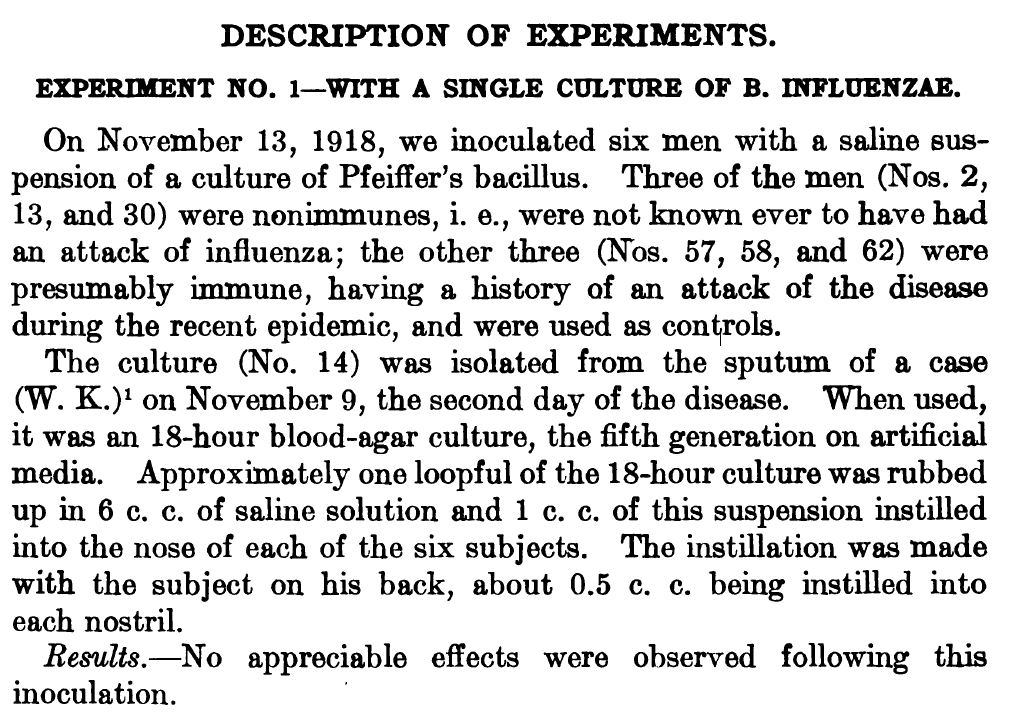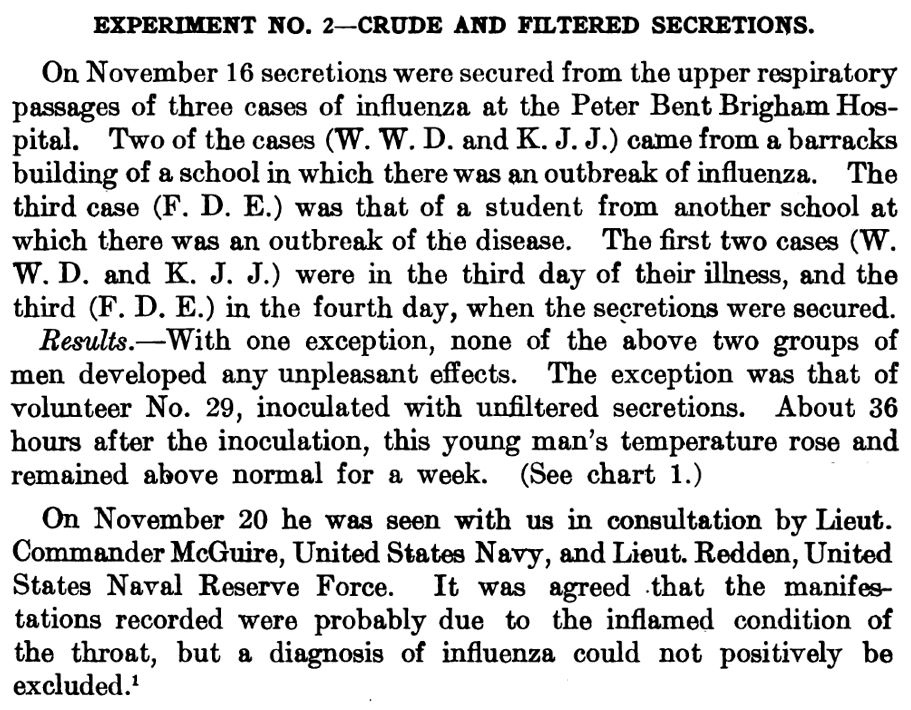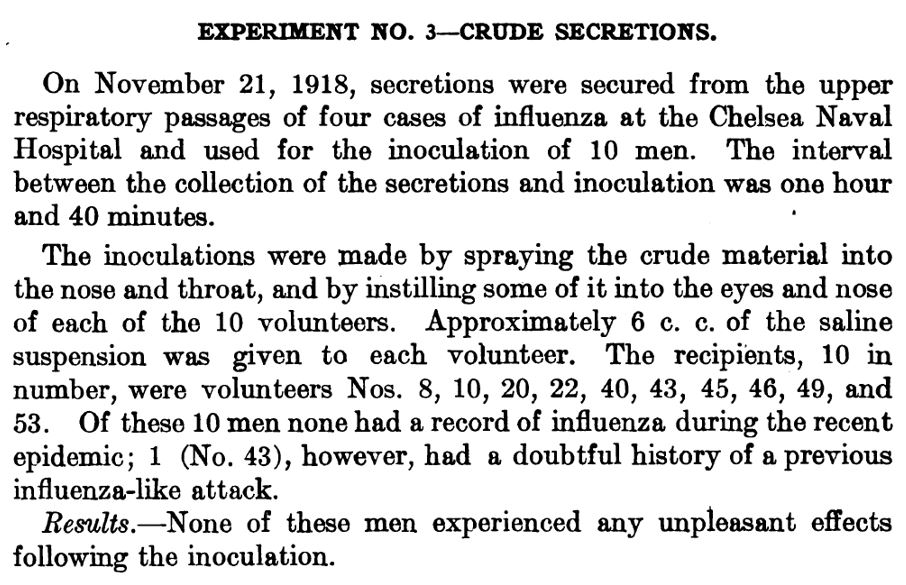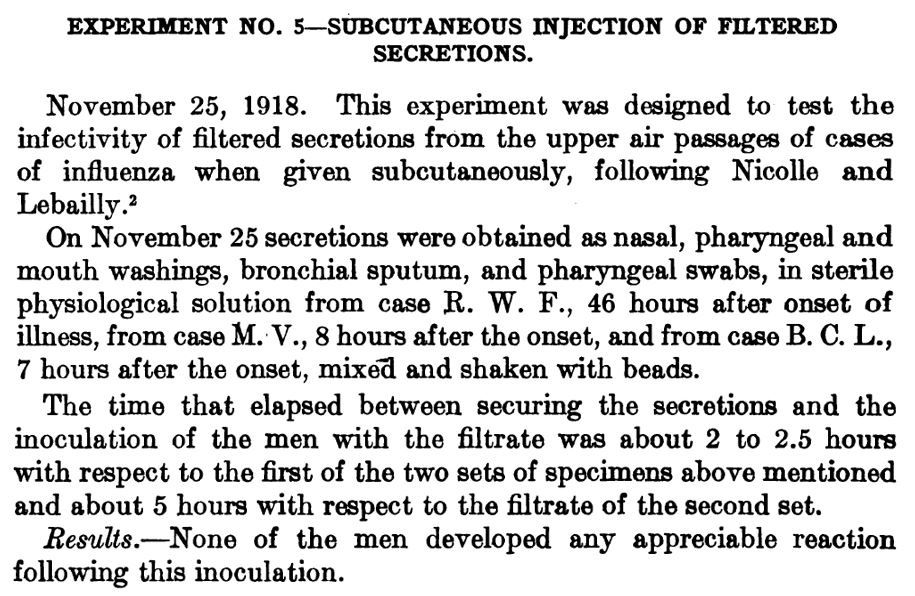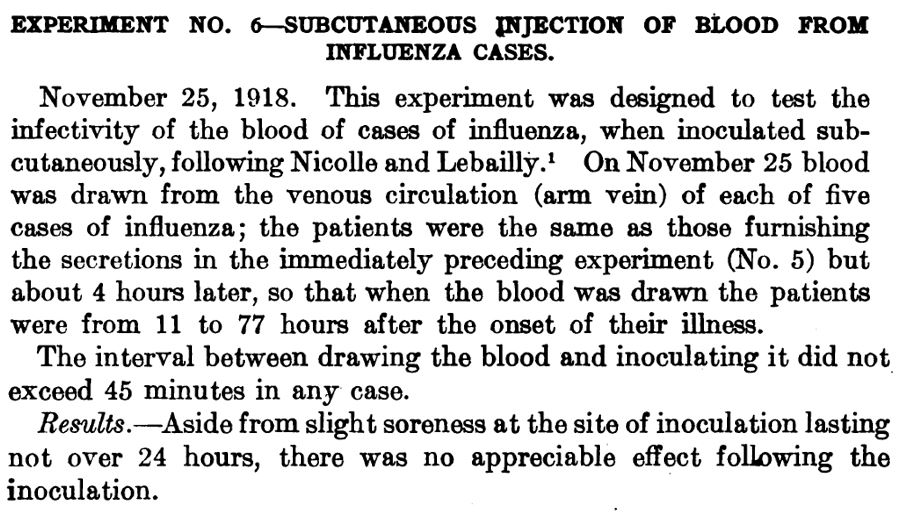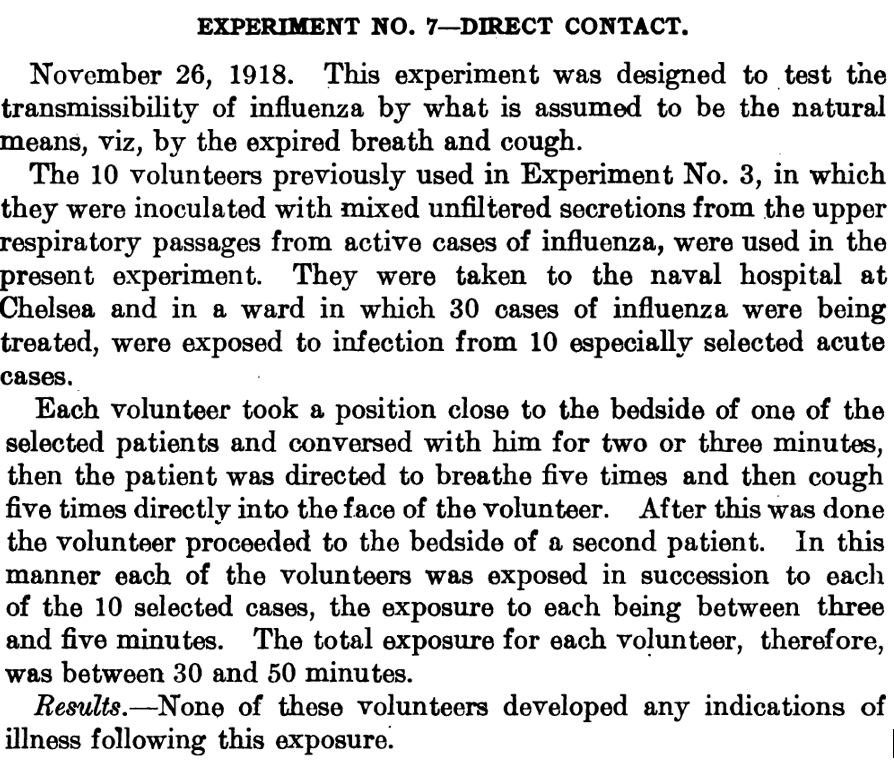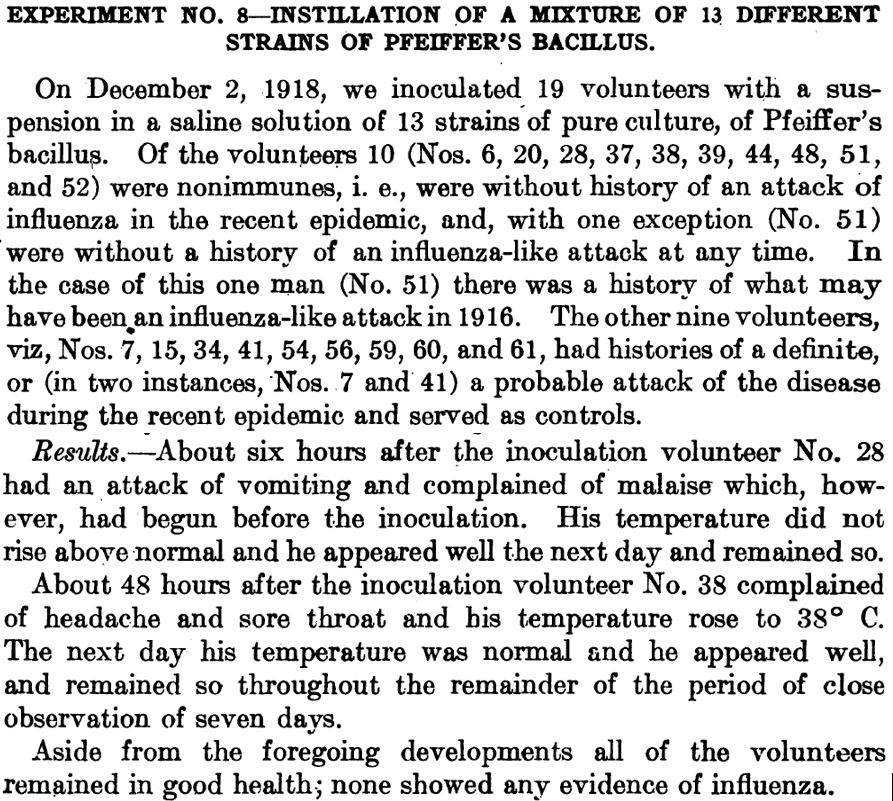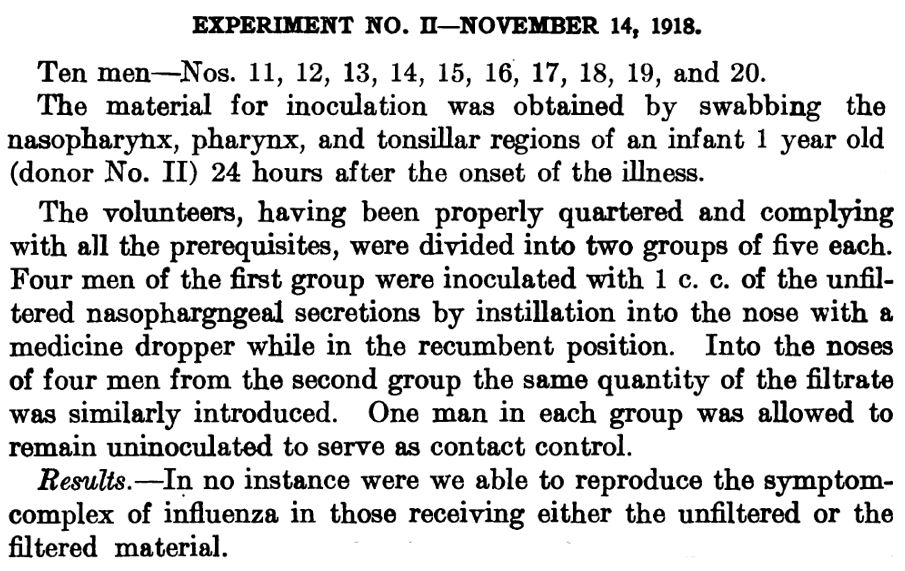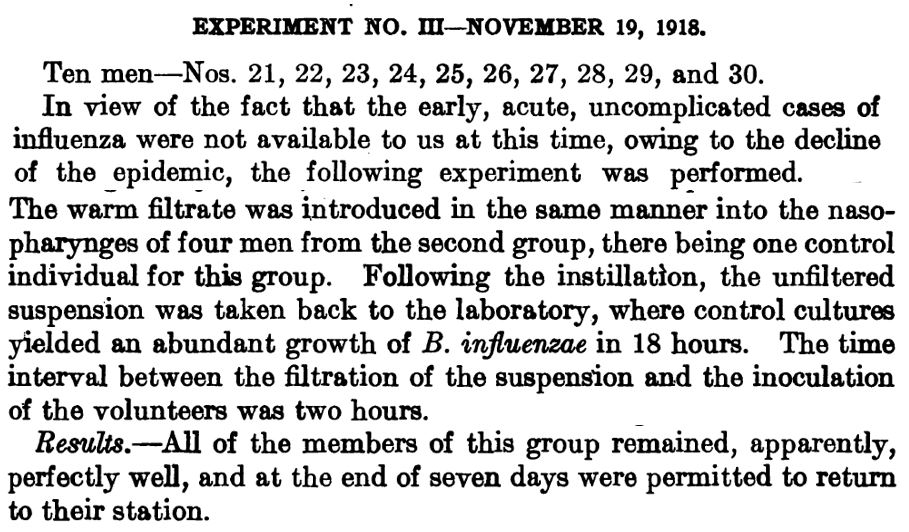Abū Mālik al-Ashʿarī (رضي الله عنه) reported that the Messenger of Allāh (صلى الله عليه وسلم) said:
Four [affairs] in my ummah are from the affair of Jāhiliyyah—[the pre-Islamic days of ignorance and superstition]—which they will not abandon: Pride in the nobility of one’s ancestors, defaming the ancestors of others, seeking rainfall through the stars and wailing (over the dead).[1]
Abū Hurayrah (رضي الله عنه) reported that the Messenger (صلى الله عليه وسلم) said:
Four [affairs] of Jāhiliyyah that the people will not leave: Wailing over the dead; defaming ancestors; tying rain to the rising or setting of stars, a man says, ‘We were given rain through such and such a star’ and contagion [the claim of "transmission" of disease]. [A man says], 'One camel has scabies and it made a hundred more camels have scabies [through contagion]’, [but] who gave it to the first one?[2]
And in the version of Aḥmad:
There are four affairs of Jāhiliyyah that the people will not leave: Defaming the ancestors, wailing over the dead, tying the rising or setting of stars to rain, and contagion. [It is said]: 'A camel has scabies and a hundred more camels suffered scabies [through contagion].' Who gave the first camel scabies?[3]
Comments:
The Messenger (صلى الله عليه وسلم) informed that these affairs of Jāhiliyyah will not totally disappear but will remain in the Muslim nation. They are wailing over the dead, reviling ancestors, believing that the rising and setting of stars has been causally connected by Allāh to the occurrence of rain and invoking the notion of "transmission" (الإعداء) and contagion (العدوى) to explain the apparent spread of disease, wherein entities allegedly "transmit" their disease states and the property of "infectiousness", "contagiousness" and "communicability" is granted to them, as occurs in the sciences of the disbelievers.
As for the first, it is to wail and lament the death of the relative with loud crying and eulogizing the deceased with raised voices and the likes.
As for the second it is to revile the ancestors (whether one’s own or others) by speaking ill of them, denying their virtuous qualities and attributing blameworthy traits to them and what is similar.
As for the rain, if one believes it is determined by the stars themselves, as in they cause the rain outside Allāh’s will and power, then this is major shirk and disbelief. But what is intended here is the belief that there is a causal connection—within the scheme of Allāh’s creation—between the rising and setting of certain stars during the various moon phases and the occurrence of rain. This is an error in causation, it is confusing coincidence with causation and making something to be cause that is not a cause, and this enters into minor shirk.
Shaykh Sulaymān Āl al-Shaykh (رحمه الله), the grandson of Shaykh Muḥammad bin ʿAbd al-Wahhāb (رحمه الله), said in Taysīr al-ʿAzīz al-Ḥamīd, explaining these two categories:[4]:
The first of them: That he believes that the sender of the rain is the star, and this is clear (apparent) disbelief, since there is no Creator but Allāh. But the Pagan (Arabs) were not upon this. Rather, they used to know that Allāh is the sender of the rain, as the Exalted said: ( وَلَئِن سَأَلْتَهُم مَّن نَّزَّلَ مِنَ ٱلسَّمَآءِ مَآءً فَأَحْيَا بِهِ ٱلْأَرْضَ مِنۢ بَعْدِ مَوْتِهَا لَيَقُولُنَّ الله ) “And if you asked them, ‘Who sends down rain from the sky and gives life thereby to the earth after its lifelessness?’ they would surely say ‘Allah.’” [5] Hence, this is not the meaning of this ḥadīth because the Prophet (صلى الله عليه وسلم) informed that this will never cease in his ummah...
The second: That he attributes the sending of the rain to the star alongside his belief that Allāh the Exalted is the doer of that, He is the sender of [the rain]. However he means that Allāh has made it such that rain comes at the appearance of that star... This is unlawful as it is from the hidden shirk and this is what he Prophet (صلى الله عليه وسلم) intended. He informed that it is from the affairs of Jāhiliyyah and he negated and falsified it. This is what the Pagans used to claim and it has never ceased in this ummah till today.
As for the fourth, then as Ibn ʿAbd al-Barr (d. 463H) (رحمه الله) explained:[6]
As for his saying: “There is no contagion”, then it is a prohibition from that anyone should say: “A thing passes [what it has] to another thing” and it is [him] informing that a thing does not pass [what it has] to another thing. So it is as if he is saying: Nothing infects anything else [with what it has]. He says: No one afflicts anyone else with anything of:
—a physical constitution (خلق),
—action (فعل),
—disease (داء)
—or ailment (مرض) [that he has].
The Arabs used to say the likes of this in their Jāhiliyyah, that when something of these affairs connect with another thing, it passes on to it. So Allāh’s Messenger (صلى الله عليه وسلم) informed them that their saying and belief in this regard, it is not like that and he prohibited from that statement.
The above ḥadīths are evidence that the “contagion” being negated by the Messenger (صلى الله عليه وسلم) in other ḥadīths is not the one that has been ascribed to the Pagan Arabs—[the claim that they believed contagion occurs outside the domain of Allāh’s decree, outside of His will, power and permission]—since this is disbelief (kufr) that expels from the religion and the Messenger (صلى الله عليه وسلم) would not say that this would remain in his ummah if it was disbelief. The Pagan Arabs did not believe that a star itself sends down the rain outside the will and power of Allāh (عز وجل), they also did not believe that the contagion they affirmed occurs outside of Allāh's decree, outside of His will and power.
Just as the Pagan Arabs made mistakes in causation in these other affairs, such as tying the rain to the rising and setting of stars (الأنواء), in things they took as omens, such as the overhead flight of birds (الطيرة), then in the same way, in the matter of "transmission" (الإعداء) and contagion (العدوى), they:
— a) confused coincidence with causation, and upon this error:
— b) exaggerated in causation in the issue of mixing, and
— c) claimed that a camel "passes, transmits" its disease state to other camels, which is false, and the Prophet (صلى الله عليه وسلم) explicitly negated it and prohibited that this be said, since entities do not transmit their states (أعراض) to other entities.
— d) claimed, acted and behaved as if "contagiousness" is a property of disease as is found today with the disbelievers in their materialist sciences who confer these properties ("infectiousness", "contagiousness", "communicability") upon certain diseases.
The Pagan Arabs affirmed al-Qadar, its good and its evil, and rejection of al-Qadar is unknown to them (see report from al-Lālikāʾī). As such, the claim that the Prophet (صلى الله عليه وسلم) was only negating that contagion which is affirmed upon the belief that it occurs without Allāh’s will, power and decree is weak and invalidated by the above ḥadīths as well as other texts. This was not the intent of the Prophet (صلى الله عليه وسلم).
When someone says, “We were given rain by such and such a star” upon the understanding that Allāh made the rising or setting of that star to have a causal connection to the occurrence of rain, from the angle of the causes and their effects, then he has erred and has fallen into minor shirk, due to making a cause what Allāh did not make to be cause.
Even if a person said, “We were given rain by such and such a star by Allāh’s will and permission”, this is still an error, as Allāh did not make that a cause to begin with, and simply adding “by Allāh’s will and permission” does not change that. However, this is unlike saying, “The water quenched his thirst”, or “The water extinguished the fire” because the property of quenching thirst and extinguishing fire has indeed been placed in water in the scheme of Allāh’s creation.
“Contagiousness” and “infectiousness” and “communicability” are not the properties of any disease, this is the saying of the disbelievers, no entity “transmits” its disease state to another. Every instance of disease in every entity is a fresh creation through the sum of its causes.
This is elaborated upon in what follows.
The Superstition of Contagion
The Pagan Arabs believed disease is “transmitted” by one entity to another and that diseases (some of them) have the property of "infectiousness". They would say when camels developed scabies, that one camel passed its scabies to the rest. So the Messenger (صلى الله عليه وسلم) explicitly falsified and negated that by saying: (لا يعدي شيئ شيئا) “Nothing passes what it has [of disease] to another.” Refer to Ibn ʿAbd al-Barr’s explanation of this for more insight.
He (صلى الله عليه وسلم) also said, as occurs in this particular hadith: (فمن أعدى الأول) “Who gave it to the first one?”
As many scholars have explained, just as the first camel developed scabies without a prior camel, then likewise the rest. They were all subjected to the same set of causative factors from their environment, climate, food and drink through which the first camel developed scabies and then, due to individual variability in vitality and resistance, the rest developed scabies over time.
The presumption of contagion arises due to confusing coincidence with causation and ignorance of realities about the true nature and origin of disease states.
Ibn Hubayrah (d. 560H) (رحمه الله) explained that the origin of what manifests as scabies is actually from within the body, whereby the body attempts to eliminate morbid materials [from tissues, organs] first into the bloodstream and then out through the skin, so the visible effect of this surfaces on the skin eventually. This would be especially in sensitive areas where the rate of skin replacement and replenishing is high. This area of skin starts to degrade or become necrotic and this then attracts ticks and mites which are already present in the environment, the surroundings and the camel's skin. The bedouin, in his ignorance of all of these realities, would misinterpret the situation by resorting to the simplistic and superstitious notion of contagion.
However, as this would be too long and complicated to explain to the bedouin, as Ibn Hubayrah explains, the Messenger (صلى الله عليه وسلم) put it in the most simple and succinct way for him to understand by saying: “Who gave it to the first one?” Which is to say just as the first camel developed scabies through the sum of its causes and event chains without any prior camel, then likewise the rest of the camels, because they have all been subjected to the same conditions.
Thus all disease occurs through the decree of Allāh, not by the alleged "transmission" of a disease state from one camel to the rest, which is a notion from the notions of Jāhiliyyah.
The scholars who interpreted this hadith with their claim that the Prophet (صلى الله عليه وسلم) was correcting the bedouin for his belief that contagion occurs outside of Allāh's decree, then they are in error. This is nowhere to be found in the ḥadīth and this explanation arises because those who affirm contagion have fallen into the very shubhah (misconception) of that bedouin. They are confusing coincidence with causation when they see people become ill at the same time and place, and affirming contagion as an "observable reality". Thus, they are pressed to explain the Prophet's negation of contagion and came with this interpretation, that the Prophet was negating only that contagion which is believed to occur outside of Allāh's will and power, which they ascribed to the Pagan Arabs.
As Ibn Khuzaymah (رحمه الله) stated (see here), on account of misinterpretation they went on to affirm what the Messenger (صلى الله عليه وسلم) negated. This misinterpretation is refuted by the speech of the Messenger (صلى الله عليه وسلم) himself, in the ḥadīths of Abū Hurayrah above.
Just as the Pagan Arabs never claimed that a star is a cause of rain outside of Allāh's will and power by textual evidence of the Qurʾān, likewise they never claimed that the contagion they believed in occurs outside of Allāh's will and power, because they were not deniers of al-Qadar, by textual evidence of the Qurʾān.
Hence, their errors in this matter were other than this.
Temporal states that arise in bodies (أعراض) cannot be passed or transmitted. They are not noun-entities but states that require multiple causes, factors and conditions for them to be freshly created (never "transmitted").
In actual physical reality, Allāh creates fresh instances of disease states in each entity for whom illness has been decreed through the sum of its causes at the appointed time and place. Thus, every single disease instance in a herd or a population, in a given place or time, is a fresh creation of that state (عرض) in that entity. The claim that any disease has the property of “infectiousness” is the saying of the disbelievers. No disease has any such property in the scheme of Allāh’s creation and this is a subtle undermining of Allāh’s decree, and it is unfortunate that many Muslims have followed the disbelievers in this saying.[7]
There is only ever the fresh creation of disease instance by the decree of Allāh and there is no such thing as “transmission” (الإعداء) or alleged “contagion” (العدوى). This is the judgement (قضاء) of the Messenger (صلى الله عليه وسلم) and this is what Companions such as ʿAbd Allāh bin ʿUmar (رضي الله عنه) explicitly spoke with and acted upon.
Two errors are made in this matter: The first is confusing coincidence with causation which naturally leads to the second which is exaggeration in a presumed cause, that of mixing and contact between a sick and healthy person.
This is what the Pagan Arabs would fall into and the Messenger (صلى الله عليه وسلم) — for the protection of minds and hearts from corruption in belief — advised Muslims to keep away from the leper and to keep healthy camels away from sick camels. This was to prevent situations in which these false presumptions and errors in observation arise, wherein people start to entertain the notion of contagion and what it comprises and necessarily leads to of superstition, omens, unwarranted fear and baseless actions.
As Shaykh al-Luḥaydān (رحمه الله) explained:[8]
The statement of the Prophet: “Flee from the leper as you would flee from the lion”, meaning if you fear that something may afflict you and you think that the reason for this was contagion, then take care against this by not sitting with this one.
This resembles the prohibition of intoxicants and fornication and all the ways, means, and situations that lead to them. It is the prohibition of a thing and the prohibition of whatever leads to it, and this is from the perfection and completion of guidance and law.
Thus, the Prophet (صلى الله عليه وسلم) negated and prohibited belief in contagion and then gave advice [for the weak] to keep away from situations and scenarios in which they will be put to trial, make errors and exaggerations in causation and thereby fall into error and sin by affirming the very thing that he explicitly negated and uttering untoward speech. This is the view related from Imām Mālik and Imām Aḥmad (see here).
Negation of the superstition of contagion is the view of the Companions such as ʿAbd Allāh bin ʿUmar (رضي الله عنه) and Imāms of the Salaf such as Imām Aḥmad, Abu ʿUbayd al-Qāsim bin Sallām, Imām al-Ṭabarī, Imām Ibn Khuzaymah, Imām al-Ṭaḥāwī (رحمهم الله) and many scholars thereafter until this day of ours such as Shaykh al-Ḥāfiẓ al-Ḥakamī (رحمه الله) and Shaykh Ṣāliḥ al-Luḥaydān (رحمه الله).
In this view is the complete singling out of Allāh in His Rubūbiyyah. Within it lies safety in belief, speech and conduct. It is also a proof for the Believers, as Shaykh al-Ḥāfiẓ al-Ḥakamī (رحمه الله) said, against the polytheists and disbelievers, those who are mired in these types of superstitions and errors and exaggerations in causality on account of their crass pseudosciences which they have made inseparable from Darwinian evolution.
The Contagionist View
The contagionist view asserts that mixing and mingling between the sick and healthy can be a cause, by Allāh’s permission, for the “spread” of illness. This is held by many scholars past and present. It is considered an acceptable position within the bounds of acceptable differing, and all views can be subject to evaluation and critique.
There are numerous issues:
First, the contagionist view is based upon the observation that people in a given place and time become ill at the same time, yet without the potential error of having confused coincidence with causation being ruled out and eliminated by strict empirical and scientifically valid means. This is the very reason why the notion of contagion first arose among people as a simplistic presumption and explanation of the phenomena, leading to exaggeration, superstition and omen-like behaviour through misinterpretations and unwarranted fear.[9]
Statements such as "contagion is observed, witnessed, undeniable, a factual reality because we see people falling ill in the same time and place after having mixed with each other" do not constitute evidence and remain presumptions resting on errors and exaggeration in the matter of causation. This was the very mistake, confusing coincidence with causation, which the Messenger (صلى الله عليه وسلم) was correcting the bedouin for.
As Shaykh Ḥāfiẓ al-Ḥakamī (d. 1377H) (رحمه الله) explained in outlining the various angles from which contagion is negated absolutely:[10]
The first angle: That he (صلى الله عليه وسلم) ordered fleeing from the leper so that something of that [disease] does not arise in him coincidentally [to his mixing], not by the negated contagion, and so he then thinks that it was due to the mixing, and thereby starts believing in the affirmation of contagion which Allāh’s Messenger (صلى الله عليه وسلم) negated, and thus falls into distress. So he (صلى الله عليه وسلم) ordered with its avoidance out of compassion for his ummah, mercy towards them, [desiring to] end the root cause and prevent its means—not out of affirmation of contagion as is thought by some of the ignoramuses among the doctors.
The contagionist view is built upon this error, being founded upon mere presumption, without any knowledge or evidence that a person or animal allegedly "transmitted" his disease to another person or animal, exclusive to more general causes of disease that enveloped the whole group in a given time or place.
One of the earliest accounts where contagion is invoked by mere presumption, upon ignorance of the true cause(s) is from Thucydides, a Greek historian (d. ~400 BC). He wrote that during the Plague of Athens (which occurred during the second year of the Peloponnesian war) men nursing each other “caught the infection” and those who remained at home, afraid to visit each other for fear of contagion, died of neglect.[11] Outbreaks of disease and plague tend to happen during and after wartime due to various causes and factors that come upon the population and the individual, inclusive of fear and the mental state in general. The symptoms of the Athenian plague, pustular rash, high fever, and diarrhea are indicative of the body's attempt at eliminating systemic toxicity. Factors such as malnutrition, extreme cold and heat, the state of fear and others can affect the body's ability to do so in an otherwise smooth and efficient manner, leading to stronger, more intense and sometimes violent symptoms. Contagion (“transmission” of disease) is very easily invoked upon ignorance of the sum of causes and event chains, with mixing and contact being an easy catch-all explanation for the apparent “transmission” of disease from one person to another.
It is because of the natural tendency of people to offer simplistic, presumptious explanations that the Messenger (صلى الله عليه وسلم), in order to cut off the avenues, advised with keeping away from the leper and sick camels away from healthy camels and not advancing to a land of plague. This is to prevent these errors in causation leading to belief in the notion of contagion in the hearts and minds of people (and all the harmful affairs that follow on from it in speech and conduct), just as it had first arisen among people seeking simple explanations of phenomena.
Hence, we see in the ḥadīth of the leper who came to pledge allegiance to the Prophet (صلى الله عليه وسلم), he had not yet reached the Prophet (صلى الله عليه وسلم) in order to pledge allegiance and the Prophet sent a messenger to tell him to return back to his place from where he was as his pledge of allegiance has already been taken. Ibn Hubayrah (رحمه الله) (d. 560H) said regarding this incident:[12]
The meaning is that the pledge of allegiance has already been ratified for him, so he should not advance with the delegation out of fear for the people who, if they were afflicted with anything, would think that it was transmitted from him.
Likewise, to prevent the utterance of the statement "So and so passed his disease to so and so" which is false speech within the scheme of Allāh's creation, similar to saying "We were given rain by such and such a star", and this explains why the Messenger (صلى الله عليه وسلم) mentioned these things next to each other in the same statement.
Just as it would be vain speech if it was said, “We were given rain by such and such star by Allāh’s permission”, then likewise, it would be vain speech if it was said, “He passed his disease to so and so by Allāh’s permission”, since no entity passes its own state (عرض) to any other entity, rather, every instance of disease is a fresh creation of it through the sum of its causes, this being the action of Allāh, His will and decree. The Messenger (صلى الله عليه وسلم) explicitly and expressly negated that disease is “passed, transmitted” by one entity to another as this comprises a subtle undermining of al-Qadar.
Upon that:
—(لا يعدي شيئء شيئا) “Nothing passes (transmits) what it has (of disease) to anything else”,
—(فمن أعدى الإول؟) “Who passed it to the first one?”, this being a negation of the bedouin’s presumption of contagion based on confusing coincidence with causation,
—(لا عدوى) “There is no contagion”,
—That (الإعداء), the claim of “transmission” and (العدوي), invoking “contagion” as an explanation for the apparent spread of disease is from the affairs of Jāhiliyyah and will remain among the people without them abandoning it, and
—Companions such as ʿAbd Allāh bin ʿUmar (رضي الله عنه) describing the negation of contagion as the judgement (قضاء) of the Messenger (صلى الله عليه وسلم).
After all of this, it can be rightfully asked as to how the contagionist can say, “There is no contagion upon what the Pagan Arabs [allegedly] believed, (that contagion occurs outside Allāh's will, power and decree), but there is contagion (العدوى) and ‘transmission’ of disease (الإعداء) from one person or animal to another which takes place by Allāh’s will, power and decree.”?
To those who negate contagion, this can be considered vain speech, clashing with the judgement (قضاء) of the Messenger (صلى الله عليه وسلم) in the above texts.
It can be said and argued that this is similar to saying: “There is no (الأنواء) (rain through the stars) upon what the Pagan Arabs [allegedly] believed, (that the star itself brings rain, outside of Allāh’s will, power and decree), but Allāh has made rain tied to the rising or setting of stars, and hence there is (الأنواء), but it is by Allāh’s will and power.”
This can be considered affirming the very affair negated by the Messenger (صلى الله عليه وسلم) whether it is (الأنواء) or (الإعداء) and (العدوى), for he (صلى الله عليه وسلم) described all of these things as affairs of Jāhiliyyah which would remain in this ummah, with the people never abandoning them.
Indeed, this is what we see today with the people of disbelief taking the lead in this respect through their pseudosciences.
This is why Imāms of the Salaf such as Ibn Khuzaymah (رحمه الله) declared those scholars to be upon error who misinterpreted these ḥadīths and went on to affirm the very contagion that the Messenger (صلى الله عليه وسلم) explicitly negated and why Abu ʿUbayd al-Qāsim bin Sallām (رحمه الله) considered such an explanation to be the most evil interpretation and promotion of the very superstition and omen that the Messenger (صلى الله عليه وسلم) prohibited and why Shaykh Ḥāfiẓ al-Ḥakamī (رحمه الله) considered physicians who treat the Prophetic advice for weak people to keep away from the leper and the sick camels away from healthy camels as an affirmation of contagion to be ignoramuses and why Ibn Ḥajar (رحمه الله) called for the rejection of the testimony of those doctors who claim routine mixing with the sick is a cause of harm (as this is mere presumption and superstition with no empirical evidence of causation).
Further, the fact that this was the intent of the Messenger (صلى الله عليه وسلم) is shown by the actions of the Companions, such as ʿUmar bin al-Khaṭṭāb (رضي الله عنه) who would deliberately drink from the same spot of the same vessel from which Muʿayqīb, who suffered from leprosy, would drink, as a means of repelling the notion of contagion from his mind, and likewise the actions of Abū Bakr (رضي الله عنه), ʿĀʾishah (رضي الله عنها), ʿAbd Allāh bin ʿUmar (رضي الله عنه) and numerous other companions in eating, mixing and/or cohabiting with lepers. The Prophetic advice to keep away from the leper and the sick camels away from healthy camels are considered only as concessions for weak people so they are not put to trial.
Second, the notion of “spread” is conceptual and a mental judgement, this is not what happens in external reality. In external physical reality, what happens is that Allāh creates a fresh instance of illness in each entity for whom it has been decreed through the sum of its causes, and even if we accept for argument’s sake that there was something emitted from the sick that can make a healthy person sick, that would still not change the fact that a person never transmits his state of illness to another, exactly as the Messenger (صلى الله عليه وسلم) declared. Rather, that emission would simply be one factor or cause among many that are required for illness to occur in another person.
Thus, in physical reality illness does not spread (except conceptually speaking in the mind). Rather, the sum of its event-chains and causes are driven and brought, by Allāh’s decree, to each entity for whom illness is decreed. The illness is freshly created in each entity through its sum of causes and event-chains. It is not “spread” or “transmitted” and within this is the total and complete singling out of Allāh in His Rubūbiyyah. From this angle, the very notion of "contagion" (العدوى) and "transmission" (الإعداء) clashes and competes with the complete singling out of Allāh in His Rubūbiyyah and in His decree, and this is why these affairs are described as affairs of Jāhiliyyah.
Many scholars, from them Ibn Ḥajar (رحمه الله), explain that the fact that family members who mix most intensely and intimately with those who have the plague in their households never fall ill is a clear negation of contagion. Ibn Ḥajar (رحمه الله) said that the testimony of any physician who asserts otherwise and claims mixing is harmful is to be rejected due to it opposing observed reality (see here). Had there been contagion, all of these people would have become ill, but they did not. This proves that the mixing itself cannot be a cause, and therefore, the true and real causes of illness lie in other than it. This is something that all people in all places experience and witness, and is also what Shaykh Ṣāliḥ al-Luḥaydān (رحمه الله) has explained in numerous statements.
Third, all empirical, real life, scientifically valid attempts[13] to “transmit” illnesses such as flus and colds have failed to prove contagion. From these experiments are those conducted during 1918-1919 (see published documents here or see images below) where attempts made to "transmit" influenza failed repeatedly despite the use of invasive methods that go way beyond the alleged natural routes of "transmission" of disease according to the Pasteurian germ theorists and virus believers.
The Virologists who have misled the world are barking up the wrong tree, because their theory is false. They misinterpret breakdown elimination products arising from the body's internal healing mechanisms and theorise a "pathogenic" virus into existence out of what they detect of genetic fragments, proteins and other debris in patient samples. The existence of a "pathogenic virus" is only ever assumed and never demonstrated through strict adherence to the scientific method. The procedure they use (starving and poisoning monkey kidney vero cell cultures) amounts to a sleight of hand trick similar to what con-artists and magicians do, but most of them are ignorant of this, because they never question the scientific validity of these procedures.
The claims of virology and virologists (transmissible "pathogenic viruses" as causes of disease) are not scientific and are not demonstrated through the scientific method, they are wholly pseudoscientific in nature.
What virologists do:
01 Turning the effect into the cause: A good example to show the reality of the claim of the virologists is that of charcoal and ashes that remain after a fire. The virologists' claim in their own field is similar to the claim that the charcoal and ashes were the cause of the fire because they are always found at the scene of the fire. It can also be put in another way, that the ground being wet was the cause of rainfall.
They start with the unproven assumption that the breakdown elimination products (which are a result or effect of the body's internal repair and healing mechanism caused by other factors) are the cause of illness.
02 Making with your own hands the very thing you are looking for: Another good example that has been struck in that what virologists do is similar to the one who gets milk from a cow, makes strawberry yoghurt out of it, and then claims that this very yoghurt is in the cow. Or the one who takes eggs from a chicken, makes an omelette with peppers, mushrooms and onions, and then claims this omelette is inside the chicken. Or the one who takes fresh strawberries from the bush, adds milk and a banana to make a smoothie and then claims this smoothie exists in the strawberry bush. The yoghurt, omelette and smoothie are products of human endeavour and do not exist in cows, chickens and strawberry bushes.
"In vivo" is what is in the body, "in vitro" is what happens in a test tube in a laboratory, and "in silico" is what exists on computer. The alleged "pathogenic virus" is manufactured in vitro and in silico and does not exist in vivo.
03 An "In silico" existence: What virologists are calling “viruses” are manufactured in the laboratory, they are cellular breakdown products of monkey kidney cells which, after being initially kept alive with bovine fetal serum, are poisoned and starved, leading to cell death. Irrespective of whether you add a patient sample containing the alleged virus or not, the same thing is going to happen, because it is the procedure itself that is causing the cells to die and break into thousands of particles and vesicles. Genomic sequences (from the hotchpotch of human, bovine, monkey, bacterial and archeal nucleic acids) are fabricated using computer software. There is no correlation between what they have made and physical reality. There is no omelette in a chicken, and there is no such thing as a “pathogenic virus” in biology, it is a manufactured construct and exists only "in silico", meaning on computer. The "variants" they are scaring us with, exist only on computer and are not real. The existence of a "pathogenic virus" is simply assumed all along and never proven at all through the correct application of the scientific method. It is raw pseudoscience, superstition and make-believe.
See also:
- Court case in Germany proves no scientific evidence for the existence of the Measles "virus". It's all sleight of hand trickery, virologists themselves create the effects they claim are caused by the imagined virus — see video coverage and an article summarising proceedings (pdf).
What happened in this court case—the inability of virologists to prove existence of viruses through adherence to the scientific method and exposure of the virologists in that they create the very effect, through their procedures, which they claim is evidence for their imaginary virus—is the reality of all alleged "pathogenic viruses". This is a bitter pill to swallow for virologists in matters of science, just as it is a bitter pill to swallow for Ashʿarīs and Māturīdīs in matters of religion when they are told that the foundation of their misguided kalām theology regarding Allāh’s attributes returns back to Aristotle, Plato, Democritus and other misguided, errant philosophers.
Basic overview of science, pseudoscience and virology:
Group presentation and discussion on what virologists do:
More (includes Kary Mullis, inventor of the PCR procedure to amplify genetic material, on how virologists are blind followers unable to provide scientific basis for their claims):
Virologists continue in their bewilderment and confusion to this day, having no certainty, only conjecture, and this is because the procedure that underlies their entire profession (vero cell culture) does not follow the scientific method, and is nothing more than sleight of hand trickery.
They have "general presumptions", "inconclusive results" and "commonly accepted" beliefs about "transmission" and admit being in urgent need for new knowledge (see here and here), or see the two pictures below.
Fourth: In addition to the above, the presence of conjoined twins wherein one of them may have bouts of pneumonia, measles, colds and flus while the other remains healthy and disease-free despite having the same blood supply (see siamese-twins-contagion) is a clear falsification of the modern-day superstition of "viral contagion."
As for the discussion surrounding bacteria, refer to the note.[14]
A Useful Similitude
The following similitude helps explain the nature of the contagionist’s error.
Imagine five people four of whom are thirsty and one is not. The first person has a bottle of water, drinks from it, has his thirst quenched and passes the bottle to the second. The second does the same, he passes it to the third, who does the same, and he passes it to the fourth. However, the fourth had had a very salty meal, and despite drinking much water, his thirst is not quenched. He passes the bottle to the fifth and he drinks and he was not actually thirsty to begin with, and thus no quenching of thirst took place in his body, as it did with the first three.
In each case of quenching of thirst (in the first three people), these were fresh creations, they were fresh instances of quenching of thirst. In each case it is an temporal state (عرض) that is freshly created by Allāh through the sum of its causes, at the appointed time and place. The required condition (thirst) and the absence of barriers (salty meal) were fulfilled, in the presence of one of the causes (water). Through this collection of things, quenching of thirst took place, "by Allāh's decree" for the first three people.
So we say Allāh (عز وجل) created the quenching of thirst in each of the three people separately and as for the fourth, Allāh did not create it because He had decreed a barrier to exist (salty meal) and as for the fifth person, he lacked the required condition (thirst) and hence, the occurrence of the effect did not arise in his body, despite the presence of the cause (water) and absence of the the barrier (salty meal), so Allāh had willed for that not to occur.
The Confusion and Error of the Contagionist:
Now, using our similitude, the contagionist effectively says: The first person “transmitted” his quenching of thirst to the other three people, and that this happened “by Allāh’s will”. This is not true, as nobody transmitted their temporal state (عرض) of quenching of thirst to anyone else. It was always a fresh creation, a new instance in each of the three people concerned.
This very same thing happens with disease, there is no difference between quenching of thirst or disease as a temporary state (عرض).
The example with water and quenching thirst just simplifies the matter, which is why it is easy to understand. With disease, the conditions, requirements and causes are generally more complex, but the discussion is exactly the same. If we cannot say that a person transmitted his quenching of thirst to someone else, with or without saying “by Allāh’s will”, then even more so with disease.
In keeping with our above analogy with water being passed around, this is upon the assumption that the sick person emits a microbe or “virus” that is alleged to be disease causing, though this is disputed,[15] but let’s accept it for argument’s sake and give the contagionist his most favourable position.
Just as with the example with water and quenching thirst, you do not say, “So and so transmitted his disease to so and so”. This is what the Messenger (صلى الله عليه وسلم) forbade, that this should be said, because it is a false statement. No one transmits his state or condition (in this case, illness) to anyone else. Rather, each instance is a fresh creation through the sum of its causes, conditions and event-chains by the decree of Allāh. Even if a cause among the sum of causes (the water, or an alleged "virus") is “transmitted” or passed around, if we accept that, then it is still not the case that “disease” was transmitted. It is only ever freshly created in each and every entity through the sum of its causes and conditions.
Further, adding “by Allāh’s will” does not change the reality, meaning if you say, “So and so passed the disease to so and so by Allāh’s will” or “There is contagion, but it is by Allāh’s will” then you are still in error and in opposition to the clear, unequivocal declarations and judgements of the Messenger (صلى الله عليه وسلم). He said, “Nothing transmits (its illness) to anything else”, he said, “There is no contagion” and he declared “contagion” and “transmission” to be affairs of Jāhiliyyah that people will never abandon.
The notions of “contagion” and “transmission” compete and clash with the Qadar of Allāh. You do not say: "We were given rain through the stars (الأنواء) by Allāh's will. And you do not say: "So and so 'transmitted' his illness (الإعداء) to so and so by Allāh's will", or "The illness spread through contagion (العدوى) by Allāh's will."
The correct statement is:
Allāh initiates and creates fresh instances of disease in each and every entity for whom it has been decreed through the sum of its causes, conditions and requirements at the appointed time and place. Within this is the complete singling out of Allāh in His rubūbiyyah, and it is the proof of the Believers against the polytheists and all the stubborn opposers, as stated by al-Ḥakamī (رحمه الله).
Entertaining the notion of contagion is a subtle undermining of Allāh’s decree. It also leads to superstition, harbouring of omens and baseless actions emanating from unwarranted fear.
For this reason, the contagionist, more so than the non-contagionist, is most prone to being manipulated in this arena, while thinking that he is "taking the means", having fallen into misinterpretation in the issue of the means to begin with, as is evidently the case in the matter of alleged "pathogenic Darwinian viruses". Illness does not require Darwinian viruses for it's occurrence in a population to be explained.
Summary
01 The Prophet (صلى الله عليه وسلم) explicitly negated contagion, unrestrictedly and absolutely, in clear words. He offered no further explanation such as “There is no contagion upon what the Pagan Arabs believe, that contagion occurs outside the domain of Allāh’s permission and decree" (as has been attributed to the Pagan Arabs—on the contrary, they were affirmers of al-Qadar).
Since he (صلى الله عليه وسلم) would be most aware that his nation would fall into differing and confusion regarding this affair, then had that been his intent, he (صلى الله عليه وسلم) would have clarified it and made a distinction between the two contagions, the one believed to occur outside of Allāh’s permission and will, and the one believed to occur by His permission and will. However, his intent is abundantly clear, without any ambiguity.
02 The Prophet (صلى الله عليه وسلم) highlighted to the bedouin, in the matter of his camels and scabies, that he fell into the mistake of confusing coincidence with causation, and that his camels got scabies through the decree of Allāh, not by contagion, as no such notion exists in the scheme of Allāḥ’s creation, since the Messenger (صلى الله عليه وسلم) also explained that nothing transmits its own states, conditions (أعراض) to anything else. Rather, every disease instance is a fresh creation in each entity for whom it has been decreed through the sum of its causes and event-chains.
03 The Companions such as ʿUmar bin al-Khaṭṭāb (رضي الله عنه) deliberately ate and drank with lepers to eliminate the notion of contagion from their minds and ʿAbd Allāh bin ʿUmar (رضي الله عنه) treated the negation of contagion to be an issue of accepting the judgement (قضاء) of the Messenger (صلى الله عليه وسلم).
04 The Imāms of the Salaf such as Abu ʿUbayd al-Qāsim bin Sallām (d. 224H) (رحمه الله) considered the interpretation of the Prophetic texts that advise keeping sick camels away from healthy camels from the angle of fear of disease to be the most evil of interpretations as it only promotes the very superstition and omens the Prophet’s guidance came to put an end to (see here).
05 Other Imāms such as Ibn Khuzaymah (رحمه الله) considered those scholars to be in error who misinterpreted these hadīths and affirmed the very contagion that the Prophet (صلى الله عليه وسلم) negated (see here).
06 Ibn Ḥajar (رحمه الله) called for the rejection of the testimony of doctors who claim that visiting a person who is ill with the plague is harmful, because it contradicts the realities (see here).
07 Other scholars such as Shaykh al-Ḥāfiẓ al-Ḥakamī (رحمه الله) consider those doctors who confuse coincidence with causation and wrongly affirm contagion as ignoramuses, as has preceded. This has also been expressed by other scholars in the past.
08 Contagion has never been proven, only assumed. All genuine, real-life experiments, mimicking real life conditions, to prove contagion or that a disease can be “transmitted” through normal, real-life conditions have failed.[16] This was one of the reasons why the pseudoscience of “virology” had to be propped up by Rockefeller funded cronies, to maintain this superstition and thereby enable the sale of serums and injections through fear of imaginary entities.
09 Virology is a pseudoscience and fraud.
Just as in the affairs of religion, an Ashʿarī or Mātūrīdī hates to be told that his creed regarding Allāh’s Names and Attributes traces back to the philosophical baggage of misguided Greek philosophers and is nothing but error and misguidance, having no foundation, then it is very hard for virologists and those deceived by them and their laboratory tricks to accept that they are victims of Materialist, Darwinian pseudoscience built on the fraud of Louis Pasteur.
Hence, some of them, when these indisputable realities are made clear, have no other refuge except to say: “Follow the well-known and trusted institutions”, “Refer to the experts”, “Trust 'The Science'TM”, all of which returns back to the fraud of virology resting on Darwinian biology. This is not knowledge, nor science, nor does this type of rhetoric enter under the umbrella of evidence.
Saying "You must follow my medical experts and my science", is like an Ashʿarī saying, "You must follow my scholars and my kalām". Sorry, but we are not obligated to accept the fraud and pseudoscience of Darwinian virology in matters of medicine just as we are not obligated to accept philosophy and kalām in the matters of creed.
The above is purely from a knowledge point of view.
As for when nations or goverments implement policies which are enforced on populations, then one has to abide by these regulations, from the angle of necessity, maintaining order, avoiding commotion and disturbance and showing patience. Advice can be given to the authorities through the appropriate legislated routes and channels in accordance with the Sunnah. [17]
10 Coming to the contagionist view, it is incoherent and has unresolved contradictions. It is supported by modern-day materialist pseudoscience such as the “germ theory” of disease and the superstition of viral contagion, leading to unwarranted and unfounded confidence in this position.
However as this issue has been differed over historically, this view can be accommodated so long as the measures taken are in relation to actually sick people and are backed by genuine evidence.
The best of what has been stated in this view, built upon scientific principles, is from Shaykh al-Albānī (رحمه الله) and it is worth reading and deliberating over. So whoever holds this view, they should adhere to the scientific principles outlined by the Shaykh for taking precaution. One should note however, that if the conditional principles outlined by Shaykh al-Albānī were followed strictly (such as requiring proof that the alleged microbe actually causes the disease and it is indeed "contagious"), it would actually falsify contagion.
These affairs were already debated, discussed and proven already in the early 20th century when the germ-theorists had been thoroughly refuted in their claims and had to prop up and develop the deceptive branch of "virology" and invent the category of "asymptomatic infection" or "asymptomatic carrier" to continue in their delusion, after their theory had been categorically proven false, because they misunderstood the workings of biology and had viewed it through Darwinian evolution.
11 From the fruits of the view of the absolute negation of the superstition of contagion is that one is protected from falling into unwarranted behaviours not justified by religion nor by genuine medical science. It increases a believer in strength of faith and conviction and grants him a proof against the polytheists and all stubborn opposers. It also relieves him of harmful toxic emotions (such as fear and anxiety) which themselves are causes of disease. Thus, the heart of the believer is strengthened in numerous ways.
Shaykh Ḥāfiẓ al-Ḥakamī’s (رحمه الله) said:[18]
The intent is that the negation of contagion is absolute, it is upon its totality and within it is singling out Allāh (سبحانه وتعالى) with full disposal [of all affairs] in His creation, that He is the owner of good and evil, and in His hand lies benefit and harm, there is none to prevent what He gives and none to give what He prevents. There is none to repel His ordainment and none to criticise His wisdom. There is none to overwhelm Him in anything from His creation and His command.
And within that lies strengthening of the heart of the believers, aiding of them with the strength of reliance and soundness of certainty, and proof for them against the polytheists and all of the stubborn opposers.
12 Among the scholars who affirm contagion are those who declare that there are Sharīʿah limits to precautions. Refer to:
- Ibn Rajab al-Ḥanbalī (d. 795H) on Sins, Causes of Calamities, Contagion, Legislated Means and Omens. Precaution is within defined Sharīʿah limits, and what exceeds them is from harbouring omens and from the actions of the disbelievers — (see here)
- Shaykh Sulaymān bin Ḥamdān (d. 1397H): Sins, Causes of Calamities, Contagion, Legislated Means and Omens. Precaution is within defined Sharīʿah limits and exceeding them is having an evil opinion about Allāh and such affairs are false imaginations and deceptive delusions — (see here)
- Shaykh Al-Albānī on Exaggeration in the Matter of Contagion and Imitation of the Disbelievers. Precaution is from verifiably sick people and exaggerating in this, as do modern day doctors, is from the ways of Jāhiliyyah and brings harm to society — (see here)
13 From the above, there are two views:
The first which is absolute negation of contagion, in principle, in totality, and upon that, the advice of the Prophet (صلى الله عليه وسلم) for weak people to keep away from the leper, and not to mix sick camels with healthy camels, and not to advance to the land of plague, all of this is to protect people from falling into corruption in creed, from affirming the superstition of contagion, from finding fault with al-Qadar, saying "If only I had left this place", or "...not gone to this place", or "If only I had not mixed with that person" and what is similar.
The second which is affirmation of contagion by Allāh's decree and taking the means in the form of avoiding actually sick people or places of disease outbreak to avoid being subjected to the potential causes of illness in that place.
Note: As explained above, this second view: a) arises from the age-old observation that people in the same place get sick at the same time, b) rests on confusing coincidence with causation, c) ignores causes that can span large geographical areas combined with individual susceptibility, and d) merely assumes that "transmission" must have taken place from one person or animal to another. This was the very shubhah (misconception) of the bedouin in the case of his camels and scabies. It is for this very reason that the Prophet gave advice to avoid the leper and not mix sick camels with healthy camels and not advance to the land of the plague. These are circumstances in which belief in the negated and falsified contagion arises and because of which there appears on the tongues of people statements such as "So and so passed his illness to so and so" which the Messenger (صلى الله عليه وسلم) forbade as it is a false statement.
14 There is no third view of keeping away from disease-free healthy people by two metres for fear of a disease they do not have. This is from the admitted fabrications, inventions, lies of the disbelievers. It has no basis in revelation, reason or medicine, and has never been known in history. The two metre social distancing measure is readily admitted by the CDC director to have been made up without any backing from science:
Dr. Paul Alexander (former HHS Department Official): "I asked (CDC Director) Dr. Redfield about the science the CDC used to make six feet social distancing rules etc... He said there is no science, we made it up."
When the Messenger (صلى الله عليه وسلم) described the notion of "transmission" (الإعداء) and "contagion" (العدوى) to be from the affairs of Jāhiliyyah, with our knowledge that this relates specifically to a sick person who allegedly "transmits" his state of illness to another, what then would you think the Prophetic judgement would be on the notion fabricated by the Pasteurian germ-theorists and Darwinian virologists of a disease-free healthy person "transmitting" a disease he does not have to another person by way of non-existing imaginary entities fabricated with computer software programs, having only an electronic existence on a hard-drive, not in physical reality?
15 As is widely known and reported from him, Shaykh al-Luḥaydān (رحمه الله) by virtue of his position of negation of contagion, never wore masks and nor did he do “social distancing” with the people around him, and likewise what is related from Shaykh Rabīʿ bin Hādī (حفظه الله) that he would order those who visited him to remove their masks.
That which we saw in the Western lands was the politicians and wealthy elites making mockery of people. They would be having meetings, parties, gatherings and not be wearing masks, but when in public and in the limelight, they would wear masks for the camera and often remove it immediately after the pictures had been taken. This has been observed across the Western social democracies, indicating that the rich and wealthy elite of these nations and those in the know don't really believe in any so-called "killer virus" and nor did they take these measures seriously in their personal lives, violating the rules, guidelines and mandates they themselves imposed upon their populations.
16 What has been discussed above are knowledge-based issues which relate to the perfection of Tawḥīd and falsification of the materialist, Darwinian pseudosciences of the disbelievers and the great harm and danger resulting from Muslims being indoctrinated with these ideas in the Western institutions of learning.
17 As for practicalities such as when some of these affairs are turned into policies and enforced in nations, then the advice that has been found in all of our writings on this subject is to comply with the policies of your nation to avoid penalties, harms, disturbances and disorder. This is purely from the angle of maintaining order and avoiding commotion, confusion and disturbance and not out of affirmation of the superstition of "transmission" (الإعداء) and "contagion" (العدوى) for those who negate that. Thereafter, such people can in their individual capacity choose to avoid actually sick people from the angle of not being put to trial in their creed and succumbing to the notions and misconceptions of "transmission" or "contagion" in belief or speech.
18 ِِ As for those who accept, accommodate or follow the science of "viruses" claimed by the people of disbelief (which are framed by them within Darwinian evolution), and likewise the idea of "asymptomatic transmission" and the notion of "variants" arising through mutation and natural selection, as is claimed, then they consider the measures to be from "taking the means".
19 And the means, as has preceded, are a) those which are within the confines of what the Sharīʿah came with, as it relates to actually sick people or clearly defined places of an outbreak and which can be justified by medicine and science [in the view of those who affirm contagion], and this is what occurs in the speech of Shaykh al-Albānī and others mentioned above, and b) those which exceed what the Sharīʿah came with and have no basis in medicine or science, and from them are lockdowns, social distancing between the healthy and universal masking (of entire populations). These are now openly acknowledged medical heresies without any science or evidence to back them up. They are proven harmful and destructive to societies and individuals, and their effect is to create unwarranted fear and anxiety, which in turn promote disease states in people.
Footnotes
1. Related by Muslim (no. 934).2. Reported by al-Tirmidhī (1001) declared ṣaḥīḥ by Shaykh al-Albānī in Ṣaḥīḥ al-Tirmidhī.
3. Reported by Aḥmad in his Musnad (10821), see al-Silsilah al-Ṣaḥīḥah (no. 735).
4. Taysīr al-ʿAzīz al-Ḥamīd (2/804)
5. Sūrah al-Ankabūt (29:63).
6. Al-Tamhīd (Muʾassasah al-Furqān, 1439H) 16/99, 104.
7. Firstly, anything emitted from a sick person that is alleged to be “contagious” or disease-causing—if we grant that for argument's sake—would simply be one of many required causative factors for disease to be freshly created in another person. Hence, that emission is not itself the disease. Secondly, mixing itself is not a property of any disease but external to and other than it. Hence, no disease can have the property of “infectiousness”. Rather, it is Allāh that creates each instance of disease afresh through the sum of its causes at the appointed time and place for each and every entity for whom it is decreed. With this sound and accurate description of physical reality, the notion of contagion does not exist in the scheme of Allāh’s creation. As for those who believe that mixing can be a means, by Allāh's will and permission, for the occurrence/fresh creation of disease instance (this is the better wording, not "transmission"), and wish to take precaution, then that is from what is legislated in that view, but only as it relates to actually sick people. Applying this to healthy people is a medical heresy, it is from the lies and exaggerations of the disbelievers. It is from superstition and omens which detract from the perfection of Tawḥīd and is from minor shirk.
8. Refer to our publication: "Shaykh Ṣāliḥ al-Luḥaydān on Contagion and Omens" (2022).
9. This has continued to take place right into modern history where diseases such as scurvy, beri beri and pellagra were considered contagious. They finally turned out to be caused by chronic deficiencies in vitamins. Many other diseases thought to be contagious were actually caused by poisoning and toxicity.
10. Refer to Maʿārij al-Qubūl, Dār Ibn al-Qayyim (Ḍammām, 1415H) 3/984-989.
11. “History of the Peloponnesian War” (trans. R. Crawley, 1950), p. 133.
12. Ādāb al-Sharīʿah of Ibn Mufliḥ (Muʾassassat al-Risālah, 1419H) 3/362.
13. Meaning, experiments which strictly follow the scientific method with implementation of controls and are not simply self-fufilling “sleight of hand magic tricks” of virologists through deceptive tools and mechanisms
14. The involvement of bacteria in disease processes has a separate discussion, they are also not primary agents of disease, but are janitorial in nature. They react and change their function based on the state of their terrain. They react to causes of good and ill health and are not the primary causes of good and ill health themselves. With rare exceptions, where the situation has reached a matter of life and death, antibiotic use is justified, but broadly speaking, the "war on biology" model of the germ theorists, Rockefeller allopaths and virus believers is misguided and harmful. The excessive large-scale, worldwide use of antibiotics has not improved health as it was always based on a fundamentally flawed model of disease and a misunderstanding of the true workings of biology, rather, if one investigates history, a deliberate distortion of the workings of biology.
15. "Pathogenic viruses" are theoretical and imaginary, they are based upon misinterpretations of observations and are abstracted into existence from cellular debris (genetic materials and proteins) following apoptosis (death). As for microbes or bacteria, then though they play a role in disease processes, they are not primary agents of disease as such, and this has a separate discussion.
16. Those that appear to prove it involve deception, lack the use of controls, and do not mimick real life conditions but make use of invasive methods that in themselves are the cause of any subsequent illness or manifestation of symptoms.
17. As for knowledge based discussions in these affairs which are not the exclusive, private domain of any one person, institution, government or expert, rather they are universal affairs pertaining to the welfare of the whole of mankind (الأمور الكلية المشتركة), which are discussed and debated. No one can prevent speech in these matters when it is based on evidence and truth because the benefit of that is for the whole of mankind. Had this not been the case, then mankind's beneficial worldly interests would never be realised and they would remain in ignorance, darkness, loss and ruin and never make any advancement in science, medicine and other areas. People would remain upon error and continue to be harmed or exploited through false theories and disproven claims. Errors in these foundational issues would also affect the validity and correctness of Islamic rulings, if they were based on affairs that oppose factual, physical realities.
18. Refer to Maʿārij al-Qubūl, (Dār Ibn al-Qayyim:Ḍammām, 1415H) 3/984-989.

